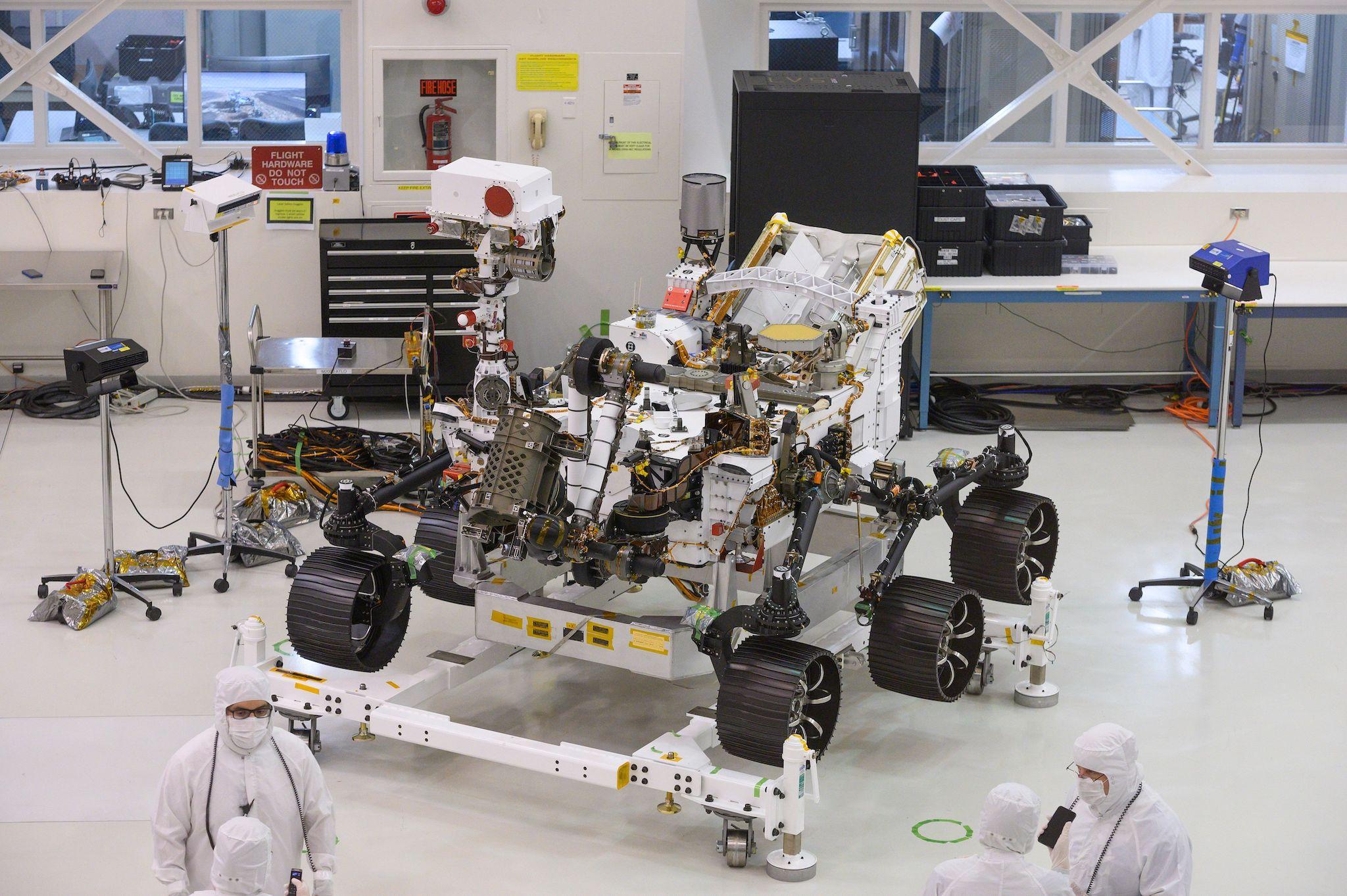Nasa Mars launch: Why the Perseverance rover will be space agency's smartest and strongest ever visitor to red planet

Nasa is firing a rover towards Mars in a launch that should liftoff this week.
The rover, Perseverance, has the job of looking for evidence of ancient life that may have once called the Red Planet home.
And it will do so using a suite of technology that makes it the smartest and strongest of the numerous rovers that have been sent by Mars to look across the surface.
It also sets a number of other records. The sample return tubes that the space agency hopes will one day be used to bring parts of the Martian surface back to Earth are the cleanest items that have ever gone to space, and it is carrying a helicopter that will make the first ever flight on another world.
Mars' rover is actually the third of a host of spacecraft that have set off for Mars this week. The UAE's Hope orbiter and China's Quest for Heavenly Truth orbiter and rover have already left, and the European Space Agency and Russia's Roscosmos had planned another for this window, during which the planets line up to allow a launch – but will have to take the next one, in more than two years.
Nasa's Perseverance will set off from Florida this week, before landing on the surface in February next year, all going well. Here is some of the technology that will make that journey – and the work that will happen once it arrives – a success.
Perseverance vs Curiosity
The six-wheeled, car-sized Perseverance is a copycat of NASA's Curiosity rover, prowling Mars since 2012, but with more upgrades and bulk. Its 7-foot (2-meter) robotic arm has a stronger grip and bigger drill for collecting rock samples, and it's packed with 23 cameras, most of them in color, plus two more on Ingenuity, the hitchhiking helicopter. The cameras will provide the first glimpse of a parachute billowing open at Mars, with two microphones letting Earthlings eavesdrop for the first time. Once home to a river delta and lake, Jezero Crater is NASA's riskiest Martian landing site yet because of boulders and cliffs, hopefully avoided by the spacecraft's self-navigating systems. Perseverance has more self-driving capability, too, so it can cover more ground than Curiosity. The enhancements make for a higher mission price tag: nearly $3 billion.
Sample collection
Perseverance will drill into rocks most likely to hold signs of ancient life and stash the collection on the ground to await a future rover. Forty-three sample tubes are on board this rover, each one meticulously scrubbed and baked to remove Earthly microbes. NASA wants to avoid introducing organic molecules from Earth to the returning Martian samples. Each tube can hold one-half ounce (15 grams) of core samples, and the goal is to gather about a pound (0.5 kilogram) altogether for return to Earth. NASA hopes to launch the pickup mission in 2026 and get the samples back on Earth by 2031 — at the soonest.
Helicopter demo
The 4-pound (1.8-kilogram) helicopter, Ingenuity, will travel to Mars clutching the rover's belly and, a few months after touchdown, attempt to fly solo. Once dropping onto the Martian surface, Ingenuity will start out like a baby bird, rising 10 feet (3 meters) into the planet's extremely thin atmosphere and flying forward up to 6 feet (2 meters). With each attempt, it will try to go a little higher and farther. "It really is like the Wright brothers' moment," said project manager MiMi Aung. She has one month to squeeze in as many helicopter hops as possible before the rover moves on to more pressing geologic work. The future could see next-generation helicopters scouting out distant Martian territory for astronauts or even robots.
Human benefits
Besides the helicopter, Perseverance carries other experiments that could directly benefit astronauts at Mars. An instrument the size of a car battery will covert atmospheric carbon dioxide into oxygen, an essential ingredient for rocket propellant and breathing systems. Another instrument, zapping rocks with lasers to identify organic molecules and minerals, carries samples of spacesuit material. NASA wants to see how the fabrics withstand the harsh Martian environment. It will be the 2030s at best, according to NASA, before astronauts venture to Mars.
Cool stowaways
A couple Martian meteorites are finally headed home, or at least slivers of them to be used as calibration targets by laser-shooting instruments aboard Perseverance. Other cool stowaways: silicon chips bearing the names of nearly 11 million people who signed up, as well as a small plate showing Earth and Mars on opposite sides of the sun with the message "explore as one" in Morse code tucked into the solar rays. There's also a plaque paying tribute to medical workers on the pandemic's front lines. The coronavirus is preventing hundreds of scientists and other team members from traveling to Cape Canaveral for the launch.
Additional reporting by Associated Press
Join our commenting forum
Join thought-provoking conversations, follow other Independent readers and see their replies
Comments
Bookmark popover
Removed from bookmarks